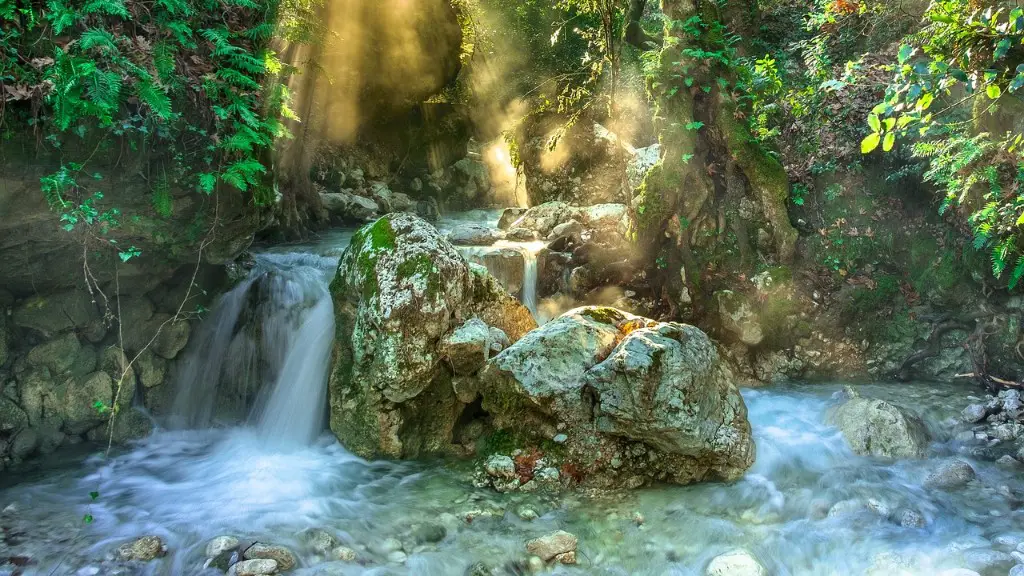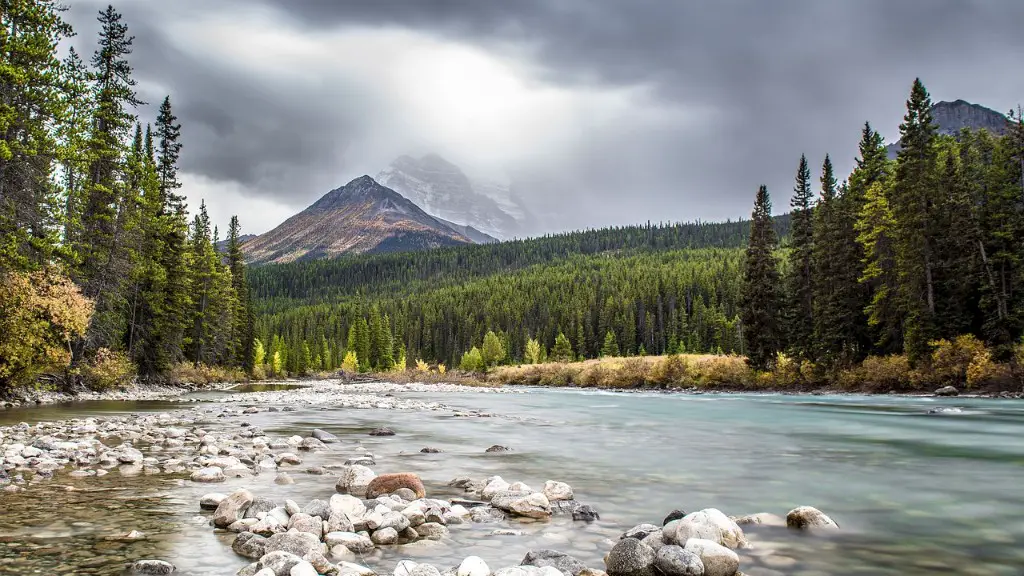The Nile River is one of the most significant and longest rivers in the world and is the source of water for much of east Africa. It is formed at the junction of the Blue and White Nile, then flows northwards throughout Sudan before entering modern-day Egypt where it forms the delta region. From there the river flows into the Mediterranean Sea. This vast river, originating from the Ethiopian Highlands, has shaped much of the history of civilizations in Africa.
Throughout its length of 6,853 km, the Nile River provides water for an estimated population of 400 million people living along its banks. This makes it the longest river in the world, as it travels through 11 different countries. The Nile is known for its various tributaries, each of which provides water to a significant region. The river is also known for its vital role in modern and ancient history throughout the African continent.
The history of the Nile River dates back to ancient Egypt, with evidence of early settlers, who relied on its waters for irrigation and sustenance. In ancient times, the river was worshipped as a god, and its flooding and shifting banks were critical in the development of agriculture and trade in Egypt. Over centuries, the Nile has played a major role in rural trade, transportation and expansion of cities, and also served as an important tool in maintaining and propagating cultures for the people who lived along its banks.
The people of Egypt, Sudan and other countries have had to adapt to the changing course of the river and the effects it has had on the lives of the people. This includes in changing the course of the river and the way it is used. Egypt has put in place engineering projects such as the Aswan Dam and the Delta Barrage which are designed to regulate and contain the flooding of the river and its effects on the local populations.
Although the river relies on rainfall to fill its basin, the river’s flow is also dependent on upstream countries such as Ethiopia, which is responsible for 84% of the Nile waters. This corresponds to the wet season between June and August, when the waters of the Nile are higher than normal due to the rains upstream. This is an important source of water to downstream countries and it has raised some concerns amongst them about the upstream countries’ usage and conservation of the waters.
The Nile River eventually flows into the Mediterranean Sea near the Egyptian city of Alexandria. It is here where the river meets the sea, delivering its vital waters to the delta region and contributing to the fertility of its lands. The Mediterranean Sea is an important body of water in terms of global trade and culture, and it is here where the mouth of the river is located.
Impacts of the River
The Nile River affects the lives of people living along its banks in myriad ways. It provides freshwater for drinking, irrigation and transportation, and sustains entire communities in some parts of its path. The river is also home to many species of fish and is an example of a balanced aquatic ecosystem in which different species can exist in harmony.
The waters of the Nile are essential for the many industries and activities that develop along its banks. Aside from providing towns and villages with freshwater, it also serves as a crucial source of hydroelectric power. Developing countries in the region have used the river’s energy to build dams and power plants, which spur economic development in the area.
The Nile River is an iconic symbol of Africa and the region’s past, present and future. Its use and importance for the region can’t be overstated, as its waters are critical for the region’s survival and development. From ancient Egypt to today’s world, the Nile remains an important source of sustenance and growth for many countries.
Environmental Concerns
The Nile River is threatened by a variety of environmental issues, from changing climates to human activities that contaminate its waters. As human activity continues to increase in the region, the environment and the river’s water sources become increasingly vulnerable.
The river’s waters are essential for life in the region, but climate change and increasing population means that there is increased pressure on the environment and its limited resources. Although regional and international agreements have been put in place to help protect the river, many of the countries that share its waters have failed to comply with the rules and regulations.
The river’s waters have also been polluted in recent years, due to industrial waste, sewage, agricultural run-off and other sources. This has a direct effect on the health of the people living near or depending on the river for their livelihoods. Furthermore, the pollution affects the river’s aquatic life, threatening the region’s biodiversity and the river’s overall health.
In addition, the Nile River is a major source of sediment that is crucial for the downstream countries. However, the increasing upstream usage of the river’s waters has led to erosion and reduced flow of sediment, which has a negative effect on the fertility of the lands along its banks.
Nile River Management
The river’s management is a continuously evolving issue, as increasing population and various industries continue to make demands on it. Regional and international agreements have been put in place to help protect the river, but they often fail to take into account how different countries use and share the river.
In the past, much of the river management was centered around the development of national projects such as dams, power plants and irrigation systems. However, the current focus is moving towards a more cooperative, holistic approach to its management, which involves the participation of all countries that share the river’s waters.
The Nile River Basin Initiative was launched in 1999 in order to manage the waters of the Nile River in a fair and equitable way and to protect its waters and its environment. This initiative aims to make sure that the countries that share the Nile’s waters use them responsibly, while at the same time ensuring that their needs are met.
The Initiative has developed several plans to manage and share the river’s resources, and has set up various mechanisms designed to ensure that the river is managed in a sustainable way. These include setting general guidelines and standards for water usage, setting up regional committees to oversee the management of the river and setting up a common fund for projects related to the river.
Water Security
Water security is a major concern for many of the countries that are affected by the Nile River. As the population continues to increase, the need for freshwater becomes more and more pressing. This means that the countries along the river must find ways to ensure the security and sustainability of the river’s waters.
The Nile River Basin Initiative is working to ensure that the river’s resources are managed in a way that is fair and equitable, while at the same time protecting and conserving the environment. This means that all countries involved must cooperate and share the river’s resources in order to guarantee a secure water supply.
The Egyptian government has proposed various plans and projects to increase water security in the Nile Basin, such as the Project to Improve Water Use in the River Delta. This project is designed to increase the efficiency of water use in the delta region by improving irrigation systems and providing access to treated wastewater.
Although the resources of the Nile River are finite, there are ways to ensure its sustainability in the future. By instituting stronger water management practices, countries in the region can ensure that the river remains a vital source of water and life for generations to come.
Conclusion
The Nile River is one of the most important and longest rivers in the world, and its importance for the African continent cannot be overstated. Its waters are essential for drinking and irrigation, and for sustaining entire communities. It is for these reasons that the river should be managed and shared in a sustainable, responsible way that ensure its future health and security.





